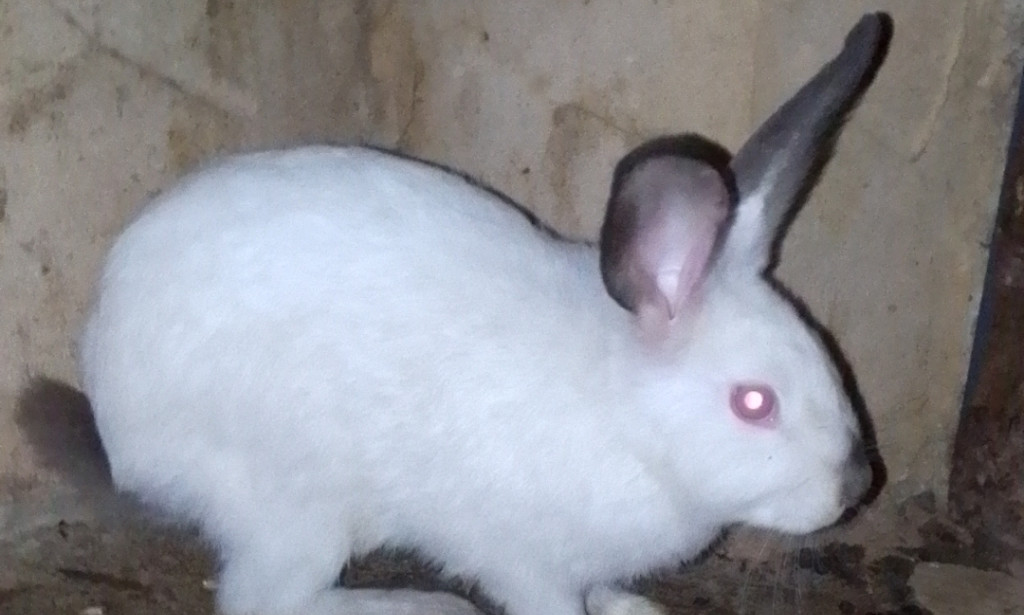12 Common Mistakes in Rabbit Farming in Nigeria
As rabbitry continues to evolve in Nigeria, many investors and farmers inadvertently commit errors that can seriously affect profitability and growth. These mistakes often lead to challenges that demoralize operators and, in some cases, push them to the brink of quitting. In this article, we explore 12 common mistakes in rabbit farming in Nigeria, explain why they occur, and offer practical advice to help you build a sustainable, thriving operation.

1. Rabbit Production Without a Marketing or Disposal Plan
A significant number of rabbit farmers focus solely on production without establishing a marketing strategy or a plan for disposing of excess stock.
Why It’s a Problem:
- Without a marketing plan, even high-quality rabbit meat and products may not reach the target consumers, limiting profitability.
- An effective disposal or sales strategy ensures that surplus stock is managed efficiently, reducing waste and maximizing returns.
Recommendations:
- Develop a clear marketing strategy that identifies your target audience.
- Establish partnerships with local retailers, restaurants, or online platforms.
- Create a plan for processing and distributing surplus stock, including value-added products that can extend shelf life.
2. Rabbit Farming Without Record Keeping
Maintaining comprehensive records is critical in any business, and rabbit farming is no exception.
Why It’s a Problem:
- Lack of record keeping can lead to poor tracking of breeding cycles, health status, and overall performance metrics.
- Without accurate data, it becomes challenging to identify trends, manage resources, or measure the success of your operations.
Recommendations:
- Implement a robust record-keeping system, whether paper-based or digital.
- Track key data points such as breeding dates, feed consumption, health interventions, and sales figures.
- Regularly review records to identify areas for improvement and to support decision-making.
3. Targeting Fellow Farmers as the Sole Market
Relying exclusively on fellow farmers as your market can limit growth opportunities and stifle business expansion.
Why It’s a Problem:
- A narrow market focus reduces the potential customer base, hindering the scalability of your operation.
- Other markets, such as households, restaurants, and specialty food stores, often remain untapped.
Recommendations:
- Diversify your marketing efforts by reaching out to a wider audience.
- Develop branding strategies that appeal to urban consumers and health-conscious buyers.
- Consider niche markets like organic or free-range rabbit products to create additional value.
4. 100% Reliance on Pigmentation/Coloration for Breed Identification
Using only pigmentation or coloration to identify and select rabbit breeds can lead to mismanagement and compromised genetic quality.
Why It’s a Problem:
- Physical appearance alone is not a reliable indicator of the animal’s health, productivity, or genetic traits.
- Such an approach can result in poor breeding choices, affecting the overall quality of the stock.
Recommendations:
- Use comprehensive breed identification methods that include genetic testing and performance records.
- Work with experienced breeders or genetic consultants to ensure the selection of high-quality breeding stock.
- Focus on traits such as growth rate, fertility, and disease resistance rather than just physical appearance.
5. Rabbit Farming Without Preventive Organic/Inorganic Medications
Preventive healthcare is essential in rabbit farming, yet many operations neglect regular medication protocols.
Why It’s a Problem:
- Without preventive measures, rabbits become more susceptible to diseases, which can spread quickly within a herd.
- Outbreaks of illness can lead to significant losses and increased costs in treatment and management.
Recommendations:
- Develop a preventive healthcare plan that includes both organic and inorganic medication regimes.
- Schedule regular veterinary check-ups and vaccinations.
- Implement strict biosecurity measures to minimize the risk of infections and disease outbreaks.
6. Embarking on Rabbit Farming Without a Business Plan
Many farmers jump into rabbit farming without a well-thought-out business plan, leading to unsustainable practices.
Why It’s a Problem:
- A lack of planning can result in poor financial management, inefficient resource allocation, and missed opportunities for growth.
- Investors may find it difficult to secure funding or partnerships without a clear vision and strategy.
Recommendations:
- Draft a detailed business plan outlining objectives, target markets, financial projections, and operational strategies.
- Revisit and update your business plan periodically to reflect changing market conditions and operational experiences.
- Use the business plan as a roadmap to guide decision-making and measure progress.
7. Mating of Buck in Small Breed Category with Medium/Large Class Doe
Improper mating practices, such as pairing bucks from a small breed with does from medium or large classes, can lead to suboptimal offspring.
Why It’s a Problem:
- Mismatched sizes can result in birthing complications, lower reproductive performance, and a decline in overall herd quality.
- It can also negatively affect the growth rate and health of the offspring.
Recommendations:
- Carefully plan breeding pairs based on size, genetic compatibility, and overall performance.
- Consult with experienced breeders to develop a breeding strategy that promotes uniformity and optimal growth.
- Monitor the outcomes of breeding pairs and adjust practices as necessary to improve reproductive success.
8. Rabbit Farming Without Knowledge of Nutritional Requirements
A common oversight is the lack of understanding regarding the nutritional needs and daily feed quantities for rabbits at different life stages.
Why It’s a Problem:
- Inadequate or imbalanced nutrition can compromise growth, reproductive performance, and overall health.
- Nutritional deficiencies or excesses can lead to diseases, reduced productivity, and increased mortality rates.
Recommendations:
- Invest time in learning about the specific nutritional requirements of rabbits at various stages of development.
- Formulate or purchase feeds that meet the necessary macro and micronutrient standards.
- Regularly consult with animal nutrition experts to adjust feed formulas based on performance and seasonal changes.
9. Use of Meat Rabbit Stock as Breeders
Using rabbits bred specifically for meat production as breeding stock can negatively impact the long-term productivity of your herd.
Why It’s a Problem:
- Meat rabbit stock is often selected for rapid growth and high meat yield, rather than reproductive efficiency or overall health.
- Over time, this practice can lead to a decline in the quality and performance of the breeding herd.
Recommendations:
- Select breeding stock based on traits that support sustainable reproduction, such as fertility, maternal instincts, and longevity.
- Maintain separate lines for meat production and breeding to ensure the genetic health of your herd.
- Periodically review and upgrade your breeding stock to ensure that they meet your long-term production goals.
10. Production Without an Expansion Plan
Focusing solely on current production levels without planning for future growth can limit your operation’s potential.
Why It’s a Problem:
- A lack of an expansion plan can lead to stagnation and missed opportunities in a rapidly evolving market.
- It may also result in an inability to meet increasing demand, leading to lost sales and diminished market share.
Recommendations:
- Develop an expansion strategy that aligns with your business goals and market trends.
- Plan for incremental growth by reinvesting profits into improved facilities, technology, and workforce training.
- Explore new market opportunities and diversify your product offerings to stay competitive.
11. Misconstruction of All Expensive Rabbits as High-Quality Rabbits
Assuming that higher-priced rabbits are always of superior quality can be a costly mistake.
Why It’s a Problem:
- High price does not always guarantee high quality. Other factors, such as genetic background, health status, and breeding practices, play critical roles in the overall value of the stock.
- Relying solely on price as an indicator can lead to the purchase of rabbits that do not perform as expected.
Recommendations:
- Evaluate rabbits based on comprehensive criteria that include genetics, health records, and production performance, not just cost.
- Seek recommendations from trusted breeders and experts in the industry.
- Conduct comparative analyses of available stock before making purchasing decisions to ensure that you invest in the best possible quality.
12. Formulating Feeds with Emphasis Only on Macro Nutrients
Focusing primarily on macro nutrients (proteins, fats, and carbohydrates) while neglecting micronutrients (vitamins and minerals) can compromise rabbit health.
Why It’s a Problem:
- Micronutrients are essential for immune function, bone development, and overall physiological health.
- An imbalanced feed formulation can lead to nutritional deficiencies, reduced productivity, and increased susceptibility to diseases.
Recommendations:
- Work with animal nutritionists to develop feed formulas that strike the right balance between macro and micronutrients.
- Regularly analyze feed components to ensure they meet the recommended dietary requirements for different age groups and production phases.
- Consider incorporating natural supplements or additives that can boost the micronutrient profile of the feed.
Conclusion
The evolution of rabbit farming in Nigeria offers significant opportunities for investors and small-scale farmers alike. However, avoiding common mistakes is critical to long-term success. By addressing issues such as lack of a marketing plan, poor record-keeping, limited market targeting, improper breeding practices, inadequate nutrition, and more, farmers can improve operational efficiency and profitability. Developing robust strategies, investing in education, and seeking expert advice are essential steps to ensure that your rabbitry not only survives but thrives in a competitive environment.
By understanding and mitigating these 12 common mistakes, you can set the foundation for a resilient and prosperous rabbit farming venture in Nigeria.

You must be logged in to post a comment.